Sometimes the focus of food is not on the dish itself but on technique. This is one of those times and this post is all about technique. Why in the world would you ever want a parchment paper lid? I already have lids with my cookware. Isn’t this kinda like paper dolls for kids? Well, not really.
People who bake are abundantly familiar with parchment paper. In fact, it’s commonly referred to as bakers paper. It is generally used as a liner for baking sheets to prevent cookies, scones and cakes from sticking to the pan. Some people even line cake tins with parchment paper as opposed to greasing and flouring the pans. Others roll it into a cone and use it as a piping bag for very fine decorative work on pastries. Parchment paper liners may also help to keep baking pans free from stains such as chocolate and caramel. It also makes clean up a whole lot easier. People who bake love it.
But what about cooking? Why would you use it in cooking? Well, the French technique of “en papillote” (in paper) is a means of cooking whereby the food is enclosed in a packet of parchment paper and then cooked in the oven. Typically, there are some vegetables, herbs and seasonings included in the packet along with the main item. These additional ingredients, along with the main item, give off steam, which is what actually cooks the food.
OK, I know some of you are thinking that you know about baking and en papillote. We’re talking about a paper lid. Let’s be real. Why would you ever want a paper lid? Well, a parchment paper lid is another one of those French techniques that has been around a while. In France, it is referred to as a cartouche. Its purpose is to control the rate of evaporation, which in turn slows the reduction of moisture and concentrates a sauce or stew in a much more efficient way. It’s used in preparations where you are trying to control heat and evaporation, for instance poached fruits, onion confit, braises, etc. In these applications, if you simply use a standard pot cover the heat inside the pot will get too high resulting in the food cooking too quickly, turning to mush and not holding as much flavor. On the other hand, if you leave them uncovered, too much moisture will be lost and the food will not be done. Another effect would be the food will also be exposed to the air resulting in it becoming discolored. A parchment cartouche is the answer. We’re going to use a parchment paper lid in the next post on Onion Confit so you will actually see it in action (as much as action can be depicted in still photography). It is simple to make and works like a charm. So without any further ado, here is how you make a Parchment Paper Lid.
Tear a piece of parchment paper from the box as close to a square as possible. Fold it in half.
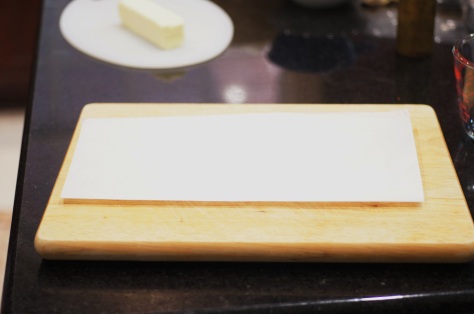
Fold it again in half to make a square.

OK, now this part is very important. You now have a square with 2 folded sides. Do NOT fold the paper so that the top side of the triangle is one of the folded sides. This is absolutely critical because if you don’t do this correctly you will wind up with 2 semicircles as opposed to a circle. 😮

Now, fold it again into a tighter triangle
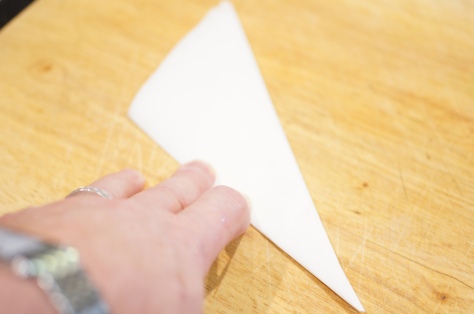
And one more time
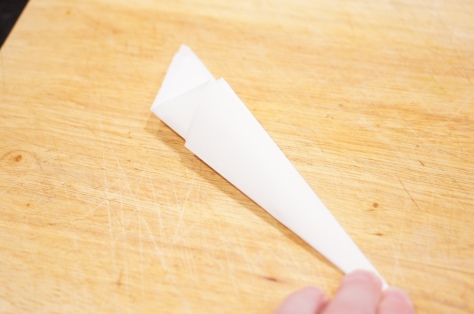
Now take the triangle to the pot/pan for which you want the lid. Eyeball the center of the pan to its edge. Now, in most cases you do not want to mark the outside of the pot because the resulting lid will be too large, so try to eyeball the inside of the pot.

Cut the triangle at the point you marked with your thumb.
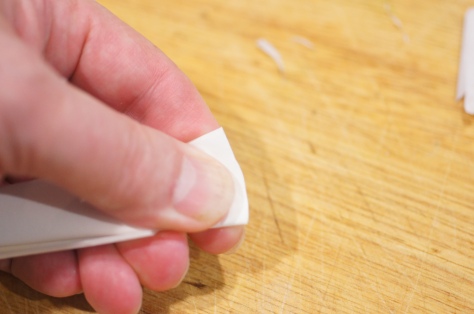
If you want a center hole (I did), then cut off a portion at the tip.
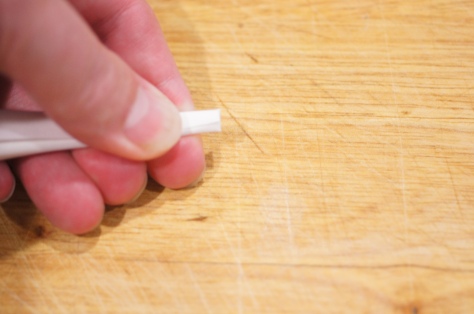
Viola! A parchment paper lid.



I love using parchment for baking, though I mostly use silpat (don’t think I can do this with a silpat!) I like this idea, maybe I’ll tie a string ‘handle’ in the middle. 🙂
A great how-to, Richard. A paper lid is not something the home cook needs every day but, when you do, you don’t need to be fumbling about trying to create one. Thanks for today’s lesson. 🙂
Thanks, John. It’s a wonderful technique in certain applications.
I’ve made fish en papillote..and love it because there is no mess and it steams so nicely.. now I can make a lid as well!
Hi, Barbara. Thanks for your comment. 🙂 I like the en papillote technique but have you ever tried a banana leaf? It accomplishes the same thing and is different and fun.
I’m not certain how easy it would be to find banana leaves here?? Maybe in a specialty market.
You fooled me! I thought you were going to do something that I saw Julia Child do with parchment paper. But this is new to me! I like my salmon en papillote.
Love this for braising proteins and veggies, keeps moisture in and the stove neat and tidy.